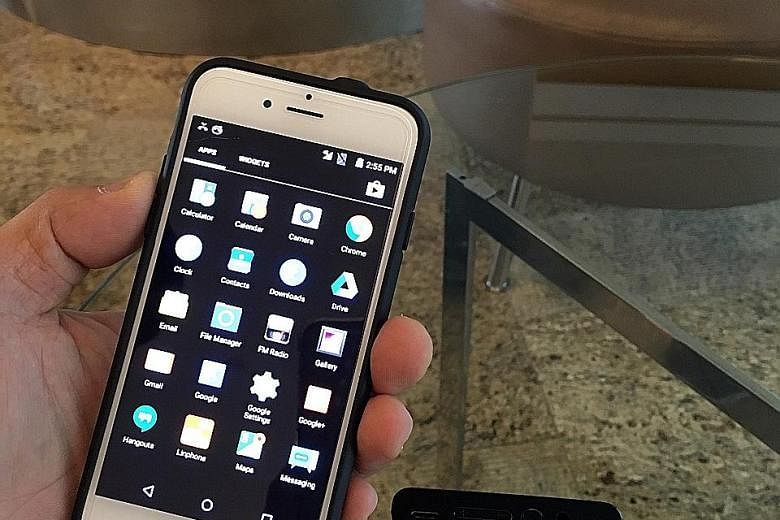Local start-up Nineteen69 has started consumer trials of its call and text forwarding device that aims to help travellers avoid expensive roaming fees or inconvenient workarounds.
Commercial launch for the device, dubbed Qongle, is slated for early November.
It lets travellers make or receive calls from any Singapore number without subscribing to auto-roaming, which costs about $10 a month.
Qongle users also avoid paying overseas call charges that range from 35 cents to $6 a minute, depending on the destination - on top of the auto-roaming subscription.
Some 100 users have started testing the device since early last month, with another trial involving a separate group of 100 users starting early next month. The product will start retailing in early November for US$109 (S$150) on the Qongle website.
"We have collected a lot of feedback and are fine-tuning the technical specifications of the product," said Mr Stuart Tan, who created Qongle after two years of research.
For instance, a new voice memo has just been added to indicate that the device is powering up or shutting down. "Some users had problems identifying if the device was switched on as there is no light indicator," said Mr Tan.
Qongle's main draw is its roaming fee-free home connect feature, and its logo bears the outline of E.T. from the 1982 sci-fi movie featuring an alien with the catchphrase "phone home".
Qongle works as a forwarding device, routing calls and SMS messages over the Internet to the travelling smartphone it is paired with.
Users download the Qongle app on their smartphone for making calls while overseas and for pairing with the Qongle hardware.
Before travelling, users must insert their Singapore SIM card into the Qongle device, which is plugged into a power source at home. It can be connected to the home Wi-Fi network to save on mobile data use.
This means that users will not be able to make or answer any calls or text messages on their way to Changi Airport until they reach the destination country. Mr Tan acknowledged that missing calls and text messages was an issue brought up by trial users.
Once there, users must buy a prepaid data SIM card and insert it into the smartphone. The Qongle app in the phone routes calls and SMS messages to and from Singapore over the phone's 4G or Wi-Fi connection. Users pay local data charges for calls with Singapore numbers. If the phone is connected to Wi-Fi, the call is free.
Normally, frequent travellers save on roaming fees by buying a prepaid data SIM card in their destination country. But the people they message or call see a foreign number, which may not be convenient.
With Qongle, however, users retain their Singapore number despite using a foreign SIM card.
Several new features - a result of feedback from trial users - will be added to the product before the commercial launch.
The problem of users missing calls and text messages until they touch down at an overseas airport will be partially addressed by a new missed call feature in the Qongle app.
"All the missed call logs and text messages will be forwarded to users once they pop a foreign prepaid data SIM card into their phones," said Mr Tan, who founded Nineteen69 in April last year with a capital injection of $300,000.
Users will also be able to set up multiple location accounts on one smartphone. This is for entrepreneurs with business operations in several countries.
Having a Qongle device in each location allows the user to make and receive calls from co-workers in different countries without incurring expensive roaming fees.
A new remote access feature will be added in the app to allow users to restart or power down the Qongle device when they are overseas.
Amid concerns following incidents of lithium ion battery-powered devices catching fire and causing property damage when being charged unsupervised, he said: "Qongle is designed to be plugged permanently into the power source when users travel overseas. There is no danger of overheating as the battery stops charging once it is fully charged."
Irene Tham


